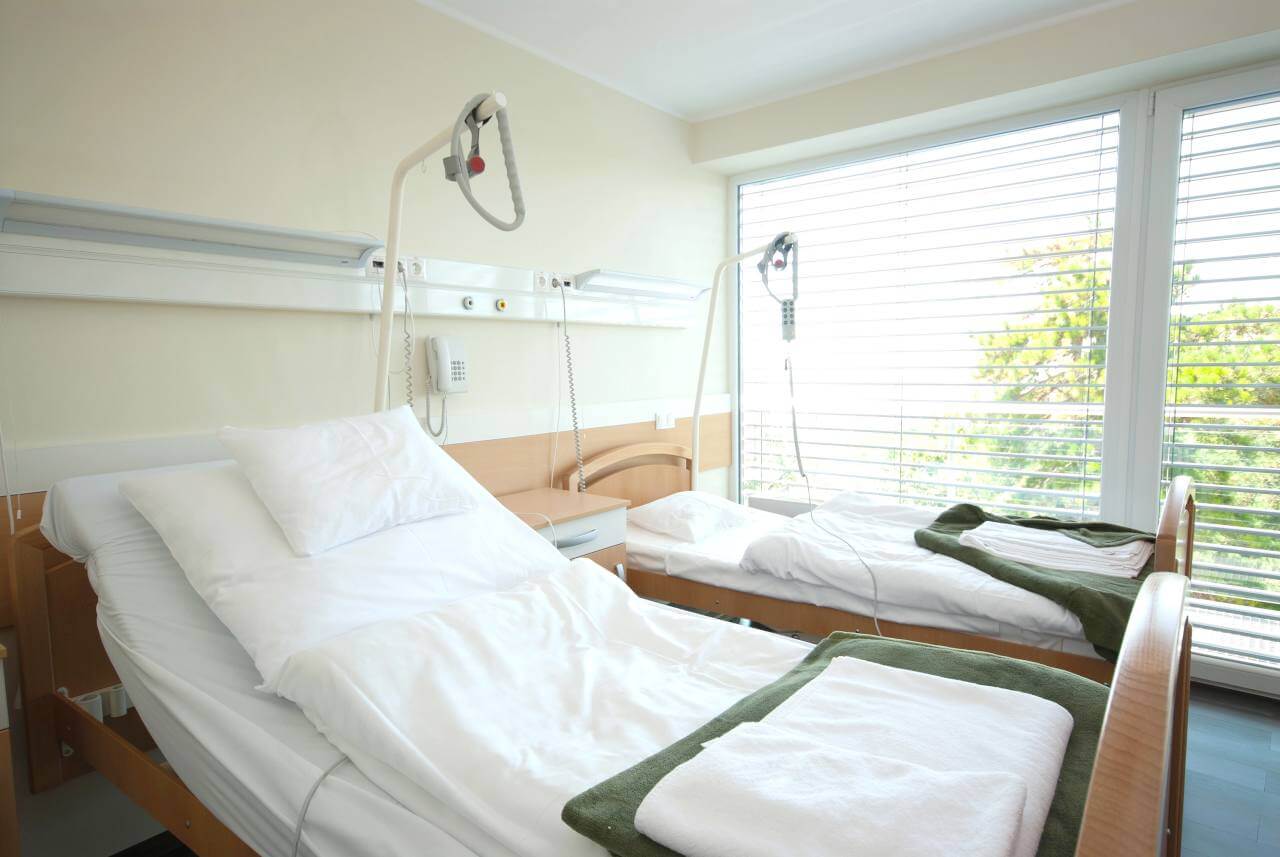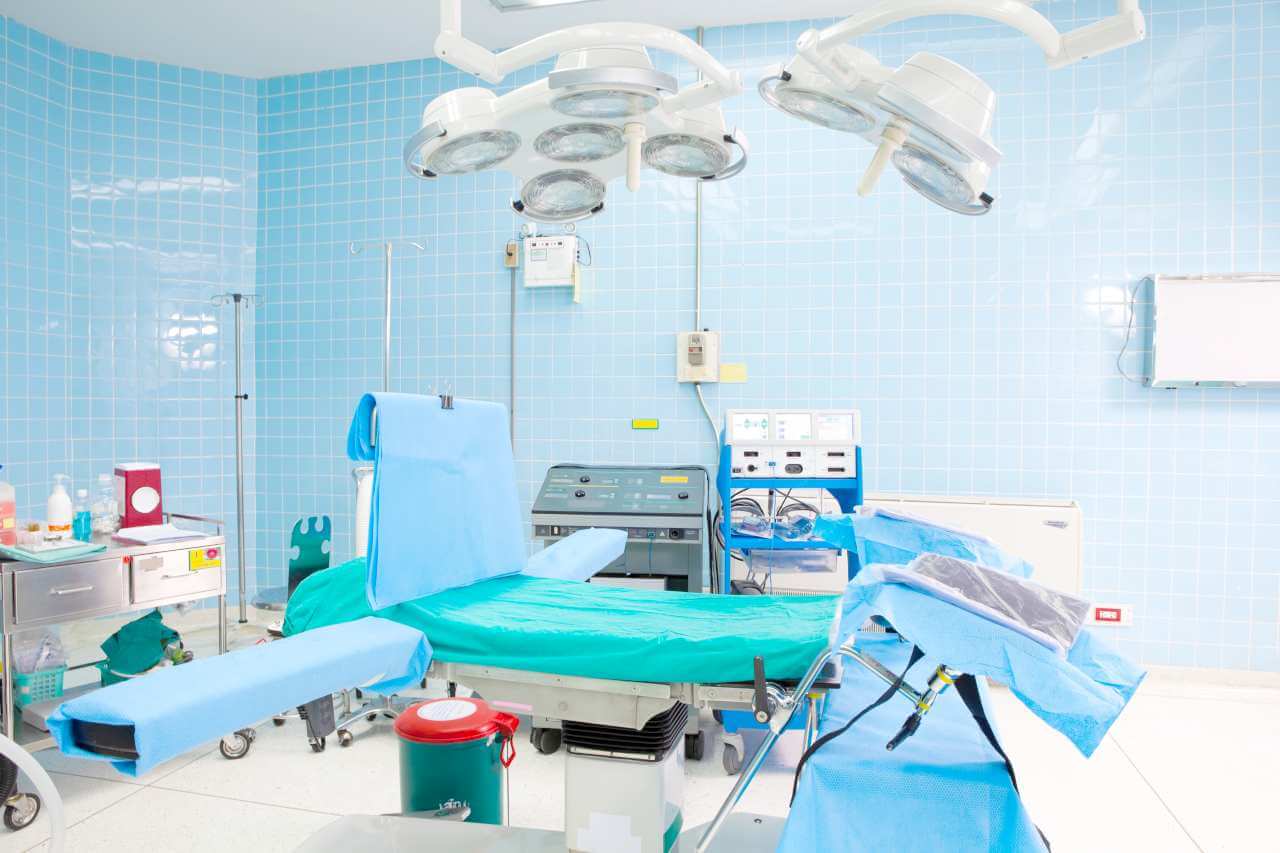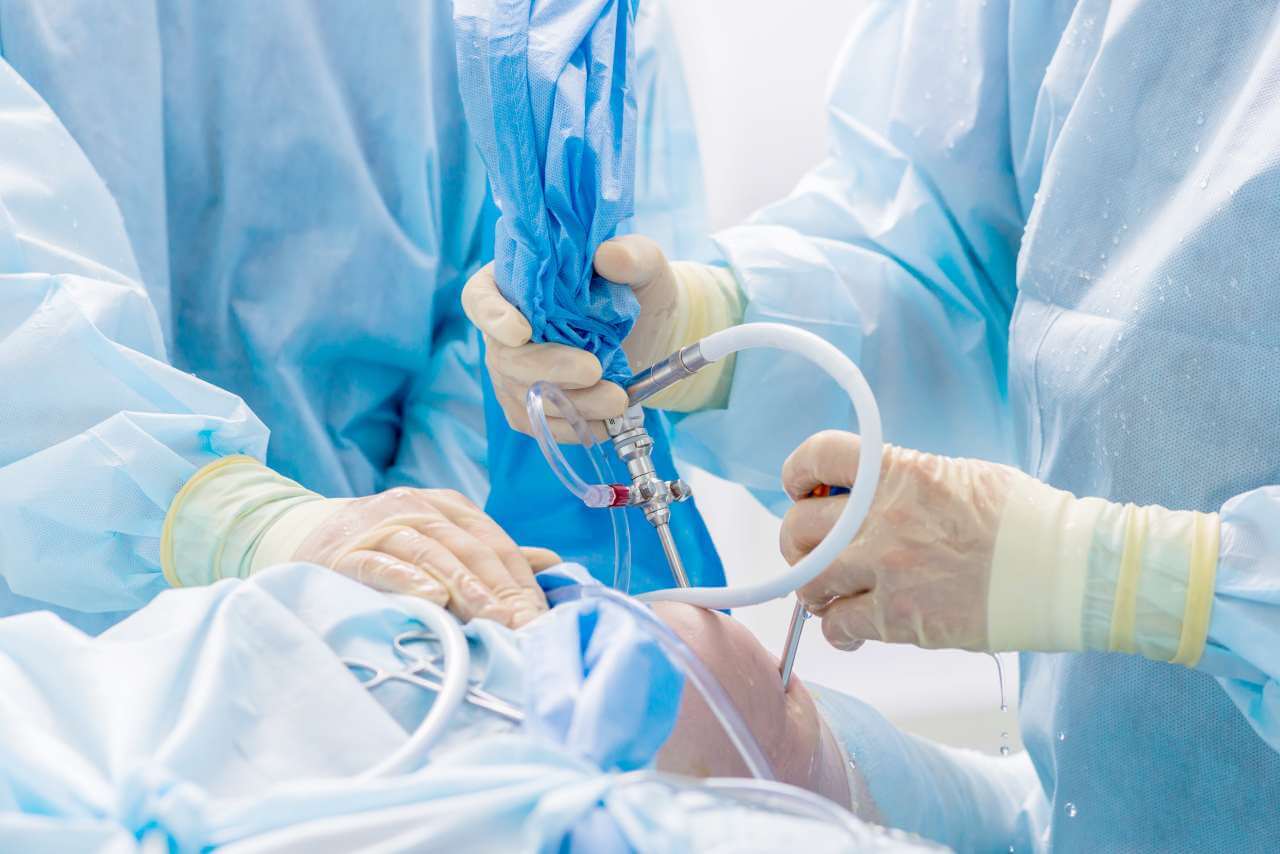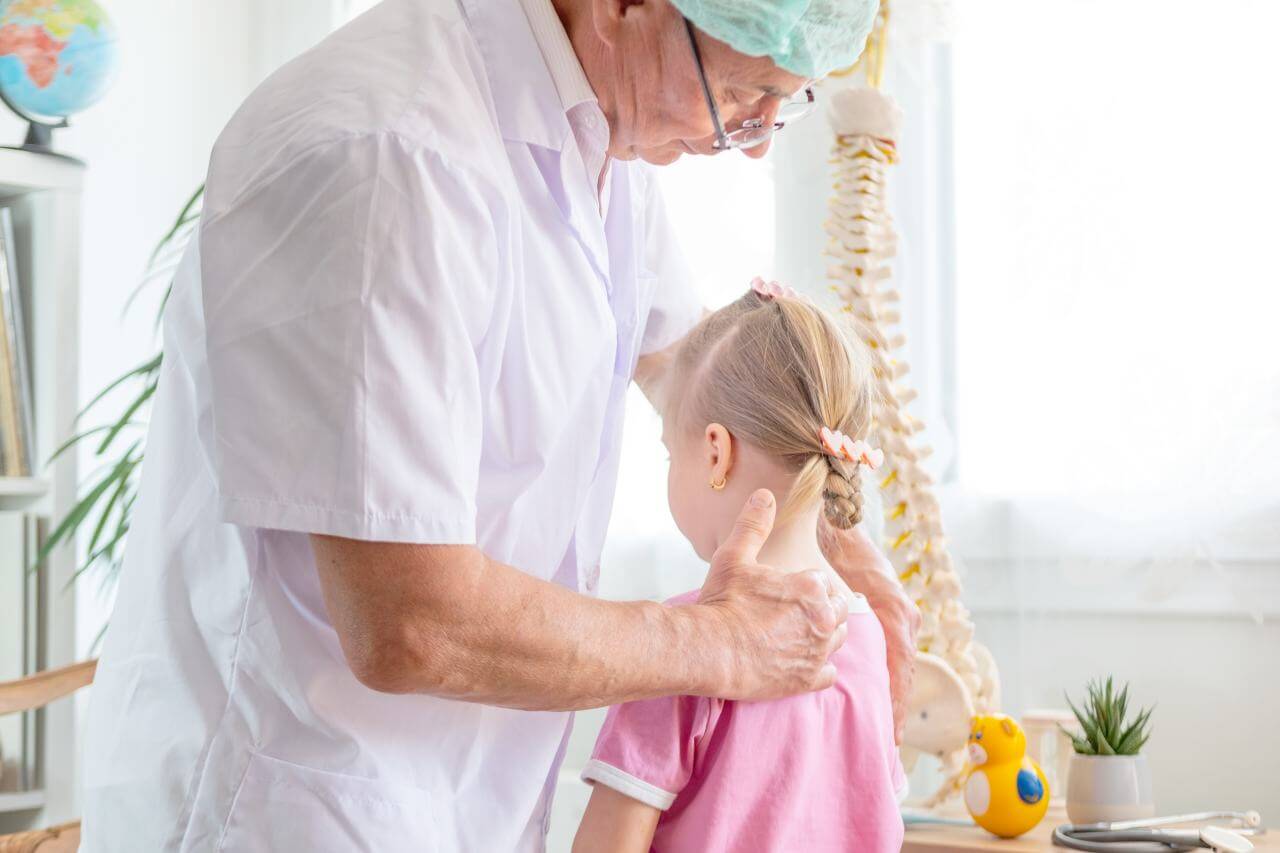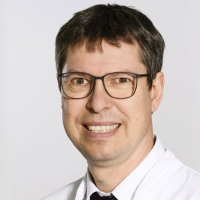
The program includes:
- Initial presentation in the clinic
- clinical history taking
- review of medical records
- physical examination
- X-ray of hip joint
- CT/MRI scan (on indication 650/1200 €)
- nursing services
- consultation of related specialists
- consultation of the chief physician and all leading experts
- development of individual treatment plan
Required documents
- Medical records
- X-ray examination, MRI/CT scan (if available)
Service
You may also book:
 BookingHealth Price from:
BookingHealth Price from:
About the department
The Department of Pediatric Orthopedics and Orthopedic Neurology at the Rummelsberg Hospital Schwarzenbruck provides the full range of diagnostic and therapeutic services to young patients with congenital and acquired musculoskeletal diseases. The specialists are also competent in providing medical care for children and adolescents with neuro-orthopedic diseases, a group of pathologies in which bones, muscles, joints, ligaments, and tendons are affected due to disturbances in the functioning of the central and peripheral nervous systems. The medical facility is one of the few in Germany and beyond where young patients with complex neuro-orthopedic syndromes can undergo comprehensive treatment. The department has a progressive laboratory for 3D gait analysis. This laboratory is used for a complete assessment of the gait parameters of children with muscle diseases, spina bifida, cerebral palsy, juvenile parkinsonism, foot diseases, and hip pathologies. In addition, a specialized Center for Multiple Disabilities has been operating on the basis of the department since 2009. Medical services for young patients are provided both on an inpatient and outpatient basis. Doctors provide conservative and surgical treatment, using only highly effective therapeutic methods. The treatment regimen is developed individually, taking into account the characteristics of the child's clinical case, his or her age, and other important factors. The Head Physician of the department is Dr. med. Michael Wachowsky.
The department's highly qualified team of orthopedists provides conservative and surgical treatment for musculoskeletal diseases in children of any complexity. Almost every day, the medical facility admits young patients with hip dysplasia, a pathology in which the formation of the joint in a child is disrupted. Without timely treatment, the disease will progress and may potentially cause a number of serious problems, such as pain, lameness, gait disorders, Perthes disease, early hip arthrosis, and even disability. However, with timely detection of hip dysplasia and appropriate treatment, the child's recovery is almost always guaranteed. The disease can be suspected during a routine checkup in the first few months of a child's life. An ultrasound scan is done to make a diagnosis. From the 9th month of life, X-ray scanning may also be indicated, including to assess the dynamics during the treatment process. The department's doctors have all the methods available in modern orthopedics for treating hip dysplasia in children. In most cases, conservative treatment with orthoses is sufficient (for example, a Pavlik harness or a Tübinger hip flexion splint can be used). It is also possible to correct the abnormal development of the hip joint using plaster casts. In some cases, conservative therapy is ineffective, especially when dysplasia is detected late (at the 6th month of life and later). Surgery is then the only treatment option in such cases: the department's specialists successfully perform open or closed reduction and osteotomy.
The department's specialists quite often deal with congenital clubfoot in children. This deformity is characterized by an inward deviation of the foot from the longitudinal axis of the lower leg. The pathology can be detected by ultrasound of the expectant mother at 8-12 weeks of pregnancy. Treatment should begin immediately after birth, in which case you can count on a successful result. If a child does not receive timely treatment, there is a potential risk of developing a disability in the future. The department's team of pediatric orthopedists most often provides conservative treatment using the Ponseti method. This involves applying a plaster cast every few days, followed by an achillotomy, a sparing surgical procedure to lengthen the Achilles tendon. The final stage of treatment for clubfoot in infants is wearing braces, which are an orthopedic device with shoes and a plastic or metal bar-shaped retainer. The construction helps fix the feet in a certain position to consolidate the effect of treatment using the Ponseti method.
The department has accumulated extensive experience in the treatment of other orthopedic conditions in children, in particular Perthes disease, congenital hip dislocation, juvenile femoral head epiphysiolysis, flat feet, O- and X-shaped leg deformities, scoliosis, kyphosis, torticollis, and congenital dislocation of the patella. The doctors in the department have all the necessary technical resources to examine a child suspected of having one of the above conditions and also have the in-depth knowledge and experience to develop the most effective treatment regimen. Conservative therapy is preferred whenever possible, but if the results of a preliminary diagnosis indicate that surgery is advisable, it is performed using minimally traumatic techniques. When planning the treatment tactics, the department's doctors always take into account the child's age and the characteristics of the musculoskeletal system at this age.
An integral part of the department's clinical practice is pediatric orthopedic neurology. The medical facility employs some of the best specialists in this field in Germany. The department offers treatment for a wide range of diseases: cerebral palsy, Duchenne muscular dystrophy, lesions of the musculoskeletal system due to traumatic brain injuries, multiple sclerosis and epilepsy, hereditary spastic paraplegia, hereditary motor and sensory neuropathy, and neuromuscular scoliosis. Medical care for children with the above diseases is provided jointly by orthopedists, neurologists, physiotherapists, occupational therapists, and therapeutic physical therapy specialists. The goal of treatment is to improve motor function and achieve maximum independence in daily life. Young patients receive comprehensive treatment: the department's specialists use orthopedic devices and orthoses, drug therapy, botulinum toxin therapy to eliminate spasticity, minimally invasive surgical procedures, and modern physiotherapeutic treatment, including reflex locomotion and vibration therapy.
The department's range of medical services includes the following:
- Diagnostics and treatment of orthopedic diseases in children
- Conservative and surgical treatment of hip dysplasia
- Conservative and surgical treatment of congenital hip dislocation
- Conservative and surgical treatment of juvenile femoral head epiphysiolysis
- Conservative and surgical treatment of Perthes disease
- Conservative and surgical treatment of congenital clubfoot
- Conservative and surgical treatment of congenital and acquired flat feet
- Conservative and surgical treatment of O- and X-shaped leg deformities
- Conservative and surgical treatment of idiopathic scoliosis
- Conservative and surgical treatment of torticollis
- Conservative and surgical treatment of juvenile rheumatoid arthritis
- Conservative and surgical treatment of congenital dislocation of the patella
- Conservative and surgical treatment of osteochondritis dissecans
- Conservative and surgical treatment of benign bone tumors
- Diagnostics and treatment of neuro-orthopedic diseases in children
- Conservative and surgical treatment of cerebral palsy
- Conservative and surgical treatment of Duchenne muscular dystrophy
- Conservative and surgical treatment of arthrogryposis
- Conservative and surgical treatment of brain diseases with damage to the musculoskeletal system
- Stroke
- Multiple sclerosis
- Epilepsy
- Traumatic brain injuries
- Conservative and surgical treatment of spinal cord diseases with damage to the musculoskeletal system
- Hereditary spastic paraplegia
- Spina bifida with myelomeningocele
- Neuromuscular scoliosis and neurogenic kyphosis
- Spinal muscular dystrophy
- Poliomyelitis
- Spinocerebellar ataxia
- Conservative and surgical treatment of diseases of the peripheral nervous system with damage to the musculoskeletal system
- Hereditary motor and sensory neuropathy
- Diagnostics and treatment of other diseases in children and adolescents
Curriculum vitae
Dr. med. Michael Wachowsky has been the Head Physician of the Department of Pediatric Orthopedics and Orthopedic Neurology at the Rummelsberg Hospital Schwarzenbruck since October 1, 2018. Previously, the specialist held the position of Head Physician of the Section for Orthopedic Neurology, Instrumental Gait Analysis and Foot Surgery in the Department of Orthopedics at the Hospital Stuttgart. Dr. Michael Wachowsky previously served as Medical Director of the Gait Analysis Laboratory. One of the specialist's clinical priorities is the treatment of gait disorders in children due to neurological diseases. Dr. Wachowsky is board certified in Orthopedics, Trauma Surgery and Rheumatology, with additional qualifications in Pediatric Orthopedics, Manual Therapy, and Physiotherapy.
Since 2018, Dr. Michael Wachowsky has been regularly included in the ranking of the best experts in Germany in the field of pediatric orthopedics by the famous Focus magazine.
Photo of the doctor: (c) Krankenhaus Rummelsberg
About hospital
The Rummelsberg Hospital Schwarzenbruck is a modern healthcare facility, one of the best in Germany in the treatment of diseases of the musculoskeletal system and the nervous system. The Rummelsberg Hospital Schwarzenbruck is an academic hospital of the Friedrich Alexander University Erlangen-Nuremberg, which allows the staff of the medical complex to have unrestricted access to the latest medical developments and to actively participate in promising research projects.
The hospital's key areas of specialization are orthopedics and neurology. The doctors of the medical complex have an excellent reputation for joint replacement surgery, arthroscopic surgery, foot surgery, spine surgery, and the treatment of musculoskeletal injuries. The hospital also offers the services of the Department of Pediatric Orthopedics and Orthopedic Neurology, and there are only a few such highly specialized medical facilities in Europe.
The hospital treats more than 30,000 patients annually. The hospital has a total capacity of 335 beds. The hospital has a highly qualified team of doctors and nursing staff of more than 850 employees. The extensive experience of the specialists allows for effective treatment of even the most complex clinical cases. The medical facility attaches great importance to the sensitive care of patients, so they are surrounded by care, and doctors show understanding for their individual needs and are always ready to provide moral support during the therapeutic process.
For many years in a row, the Rummelsberg Hospital Schwarzenbruck has been ranked among the best medical facilities in Germany by the prestigious Focus magazine in the fields of orthopedics, foot surgery, spine surgery, and the treatment of Parkinson's disease. The success of the medical center's clinical practice is confirmed by positive reviews from patients from Germany and other countries around the world, as well as a high level of satisfaction with treatment results.
Photo: (с) depositphotos
Accommodation in hospital
Patients rooms
The patients of the Rummelsberg Hospital Schwarzenbruck stay in comfortable single and double rooms designed in light colors. The furnishings of the patient room include an automatically adjustable bed, a bedside table with a pull-out tray, a wardrobe, a table and chairs, a telephone, and a TV. The patient rooms have access to Wi-Fi. Each patient room has an ensuite bathroom with a shower and a toilet. A child may stay in a patient room with one of the parents in the hospital's pediatric departments.
Meals and Menus
The hospital offers three delicious and healthy meals a day: breakfast, lunch, and dinner. The menu always features vegetarian and dietary dishes. If, for some reason, you do not eat all the foods, you will be offered an individual menu. Please inform the medical staff about your dietary preferences prior to your treatment.
The hospital also has a cafe with a wide range of hot and cold drinks, snacks, salads, and desserts.
Further details
Standard rooms include:
![]() Toilet
Toilet
![]() Shower
Shower
![]() Wi-Fi
Wi-Fi
![]() TV
TV
Religion
The hospital has a chapel where you can stay alone for prayer. It is open to the public 24 hours a day. Catholic and evangelical worships are held here every Friday.
Other religious services are available upon request.
Accompanying person
Your accompanying person may stay with you in your patient room or at the hotel of your choice during the inpatient program.
Hotel
You may stay at the hotel of your choice during the outpatient program. Our managers will support you for selecting the best option.
